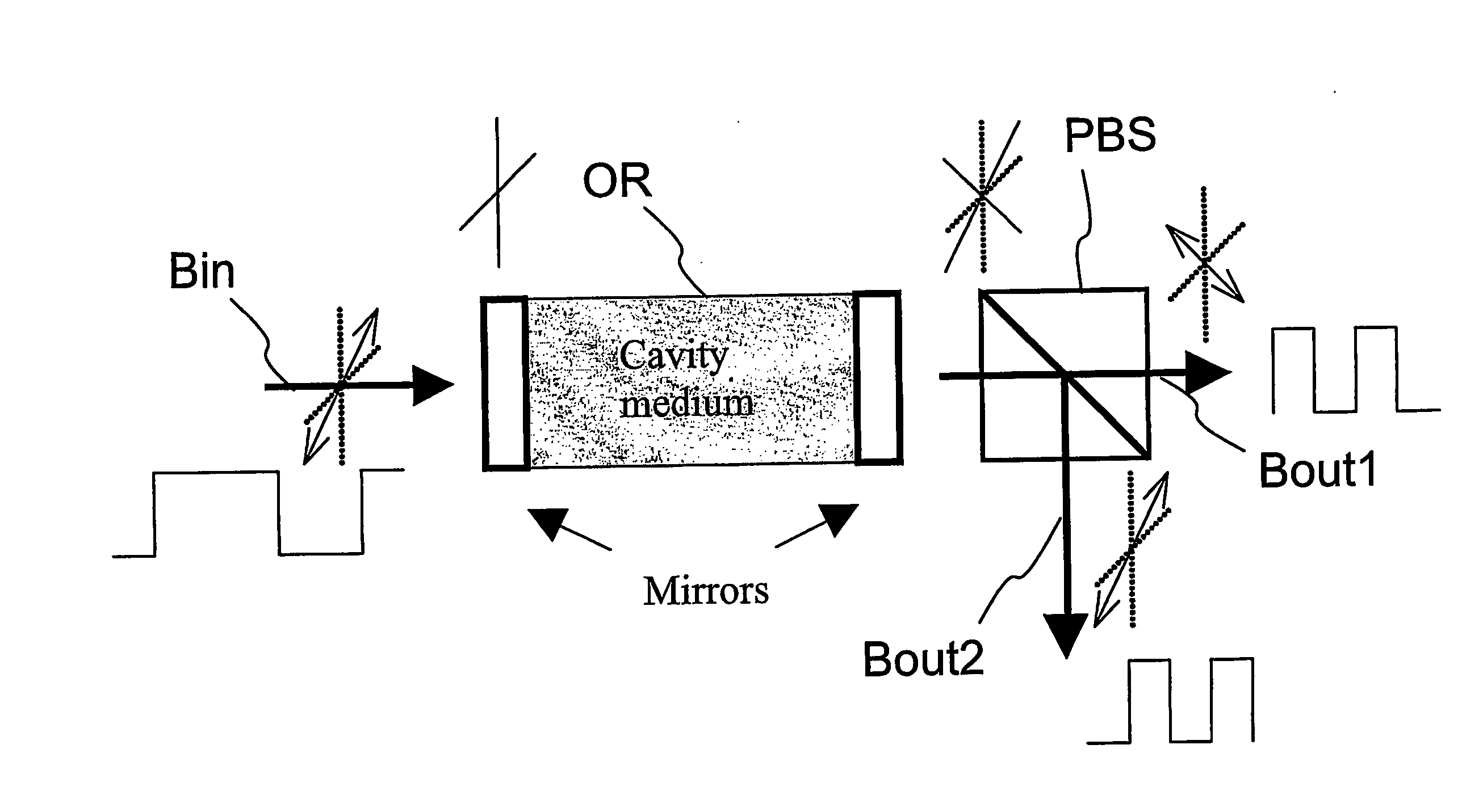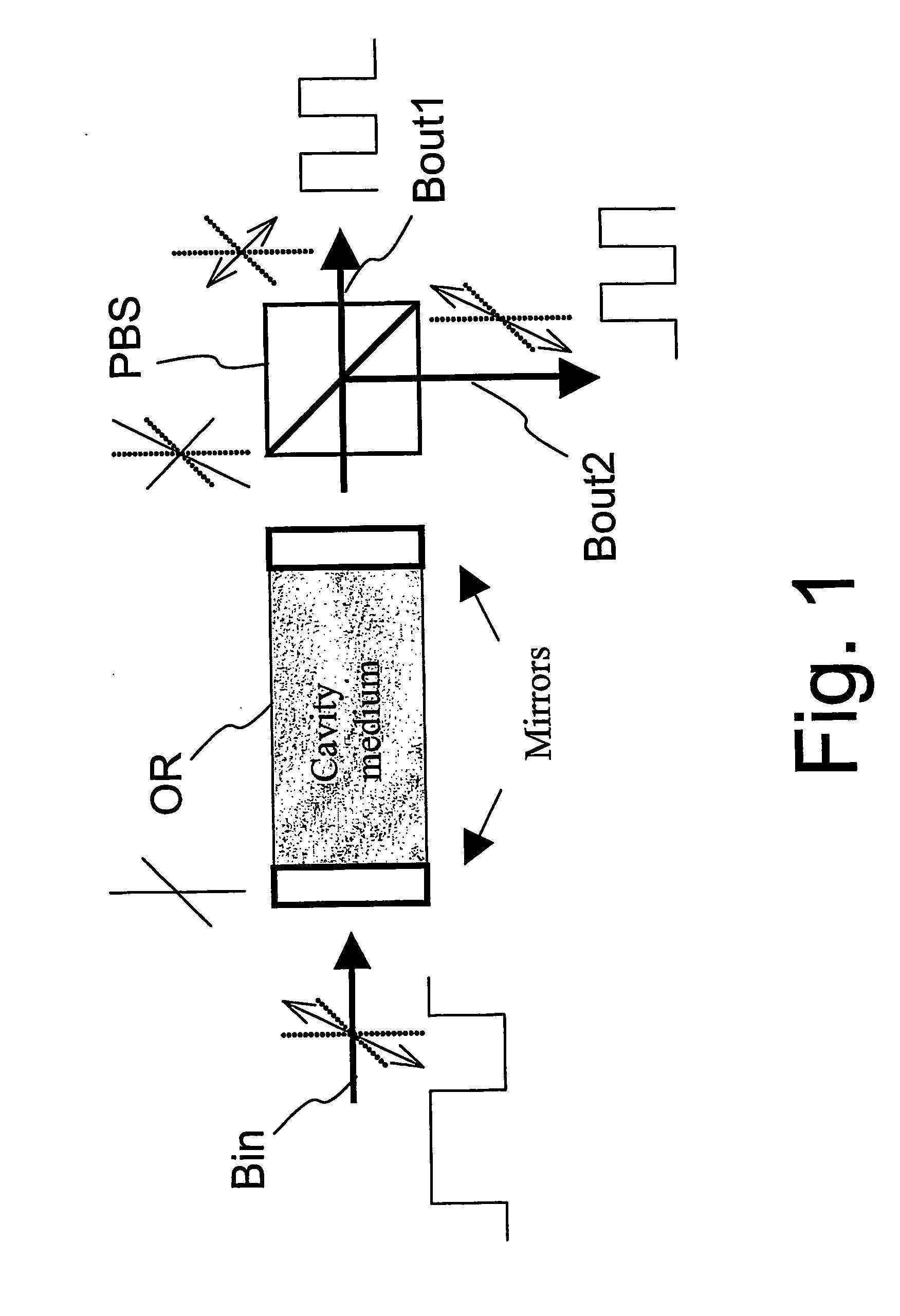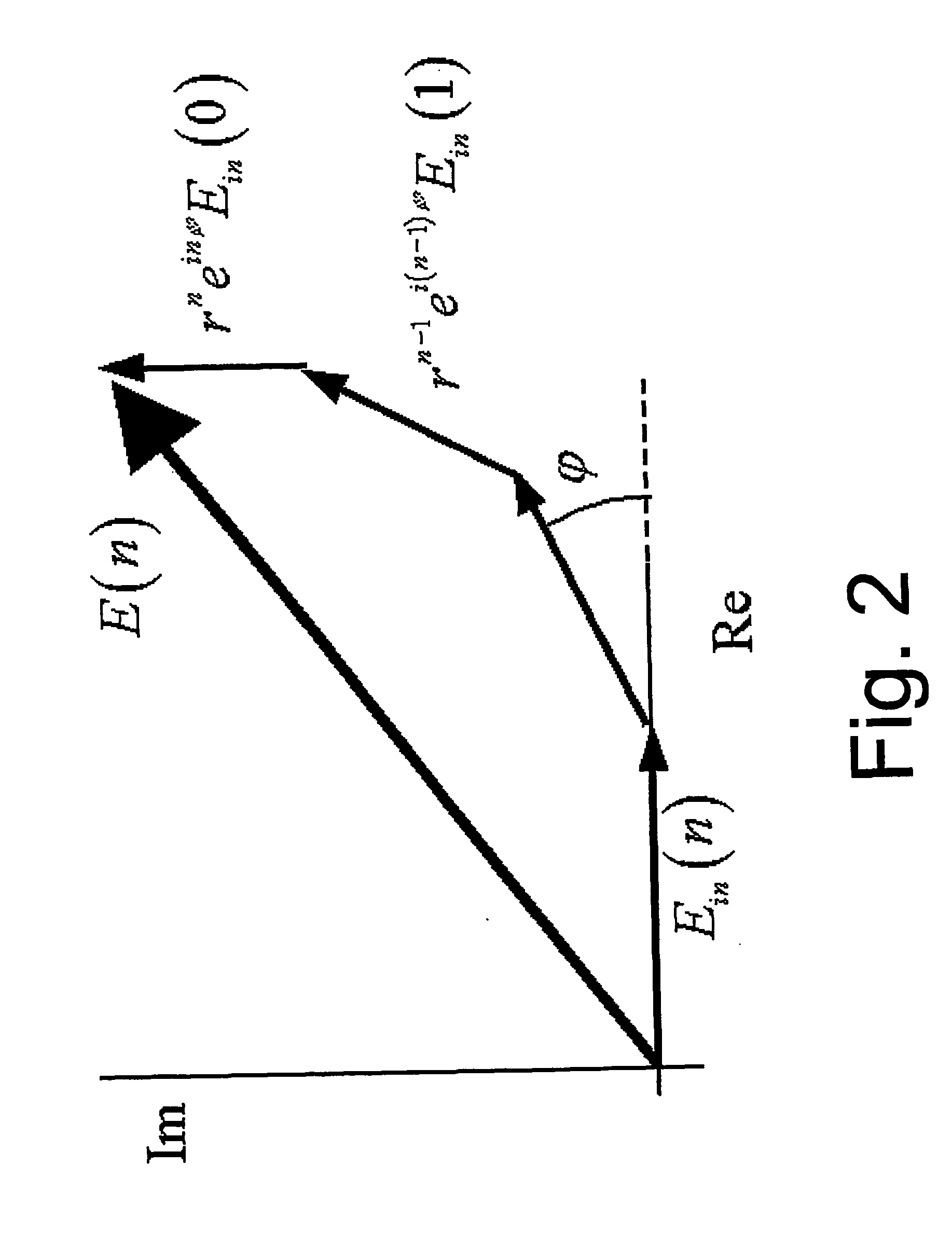All-optical signal processing method and device
a technology of optical signal processing and optical device, applied in the field of all-optical filter, can solve the problems of degrading optical signal quality, affecting the quality of optical signal, and generating additional cost in the back and forth, and achieve the effect of adequate signal level and operation, cost saving and adequate signal level
- Summary
- Abstract
- Description
- Claims
- Application Information
AI Technical Summary
Benefits of technology
Problems solved by technology
Method used
Image
Examples
Embodiment Construction
[0038] In the following the invention is mainly described referring to a birefringent resonator arrangement, where the matched and non-matched resonators are formed within a single physical cavity due to the birefringency. However, the invention is not limited to such embodiments, but the invention may also be realized using separate matched and non-matched resonators. One example of such an embodiment is later given in FIG. 19.
[0039] In the FIGS. 1,16,19 and 20 the polarization axes are depicted with “crossed” markings using both solid and dashed lines.
[0040] It is known from prior-art, as such, that an optical resonator behaves as an one-pole complex filter. Complex one-pole resonators generally, working either in optical, digital-electronic etc. domain, are able to transform purely real input signal to a complex one. Only when the wavelength of excitation is matched with the resonator, it has lowpass filtering function with no imaginary parts and therefore, it can directly be u...
PUM
 Login to View More
Login to View More Abstract
Description
Claims
Application Information
 Login to View More
Login to View More - R&D
- Intellectual Property
- Life Sciences
- Materials
- Tech Scout
- Unparalleled Data Quality
- Higher Quality Content
- 60% Fewer Hallucinations
Browse by: Latest US Patents, China's latest patents, Technical Efficacy Thesaurus, Application Domain, Technology Topic, Popular Technical Reports.
© 2025 PatSnap. All rights reserved.Legal|Privacy policy|Modern Slavery Act Transparency Statement|Sitemap|About US| Contact US: help@patsnap.com



